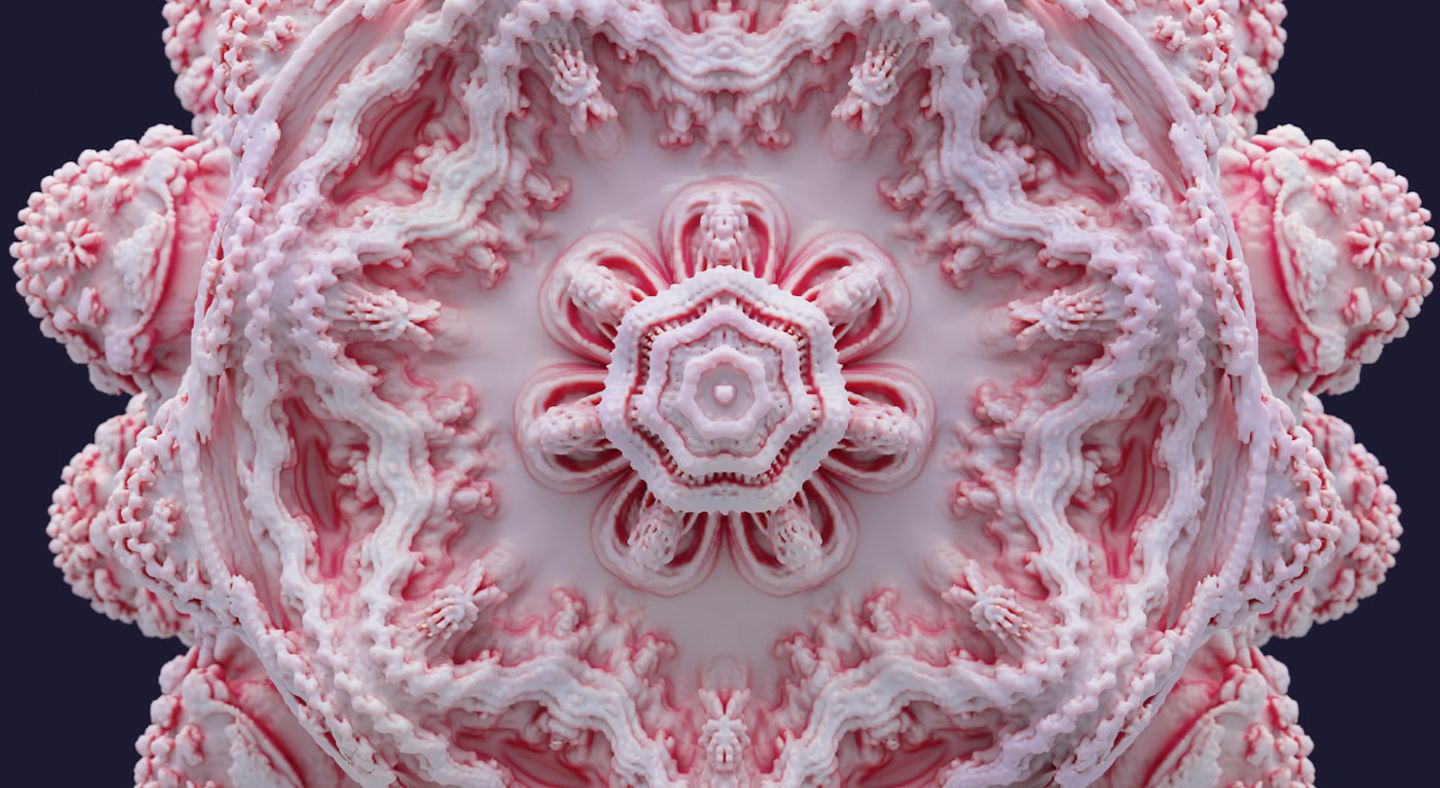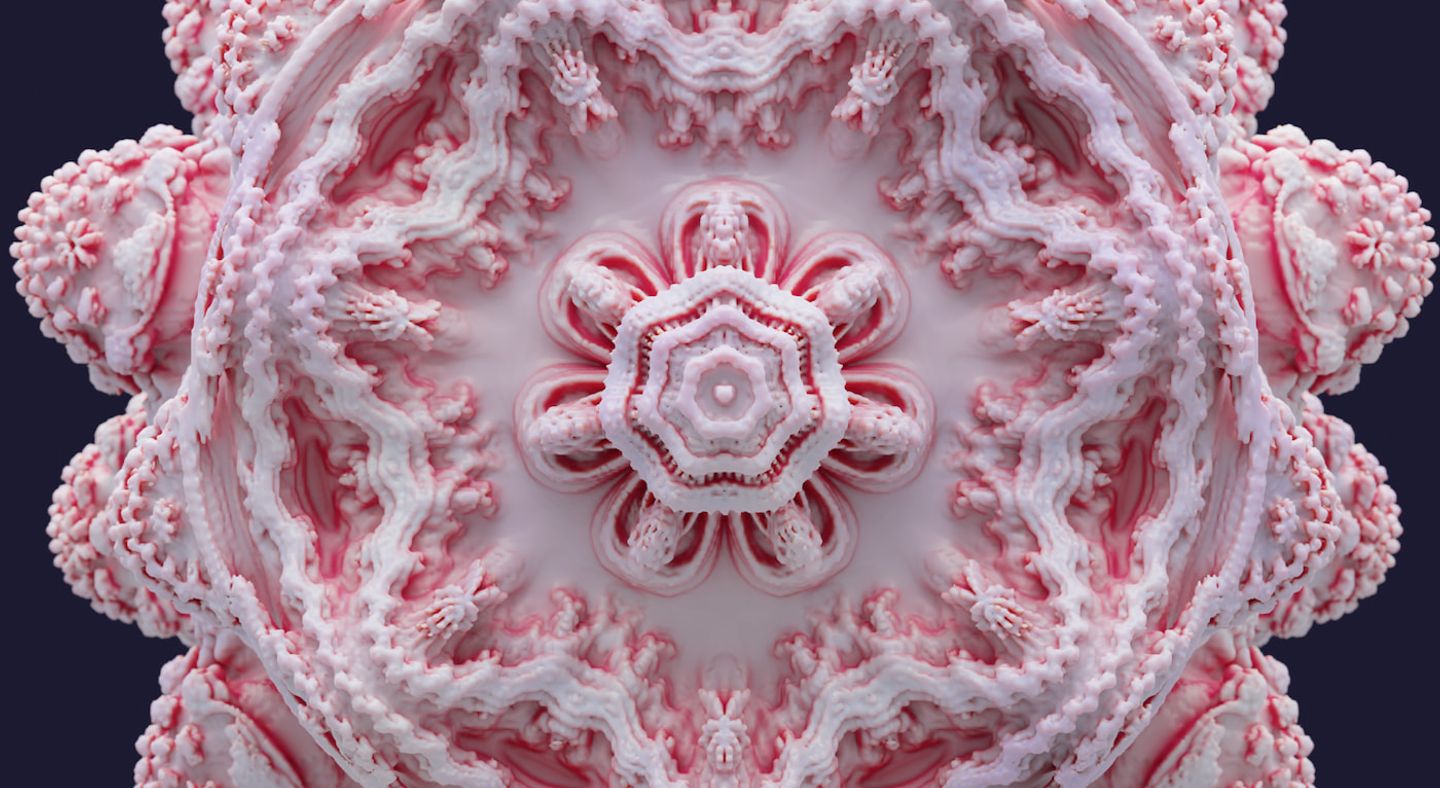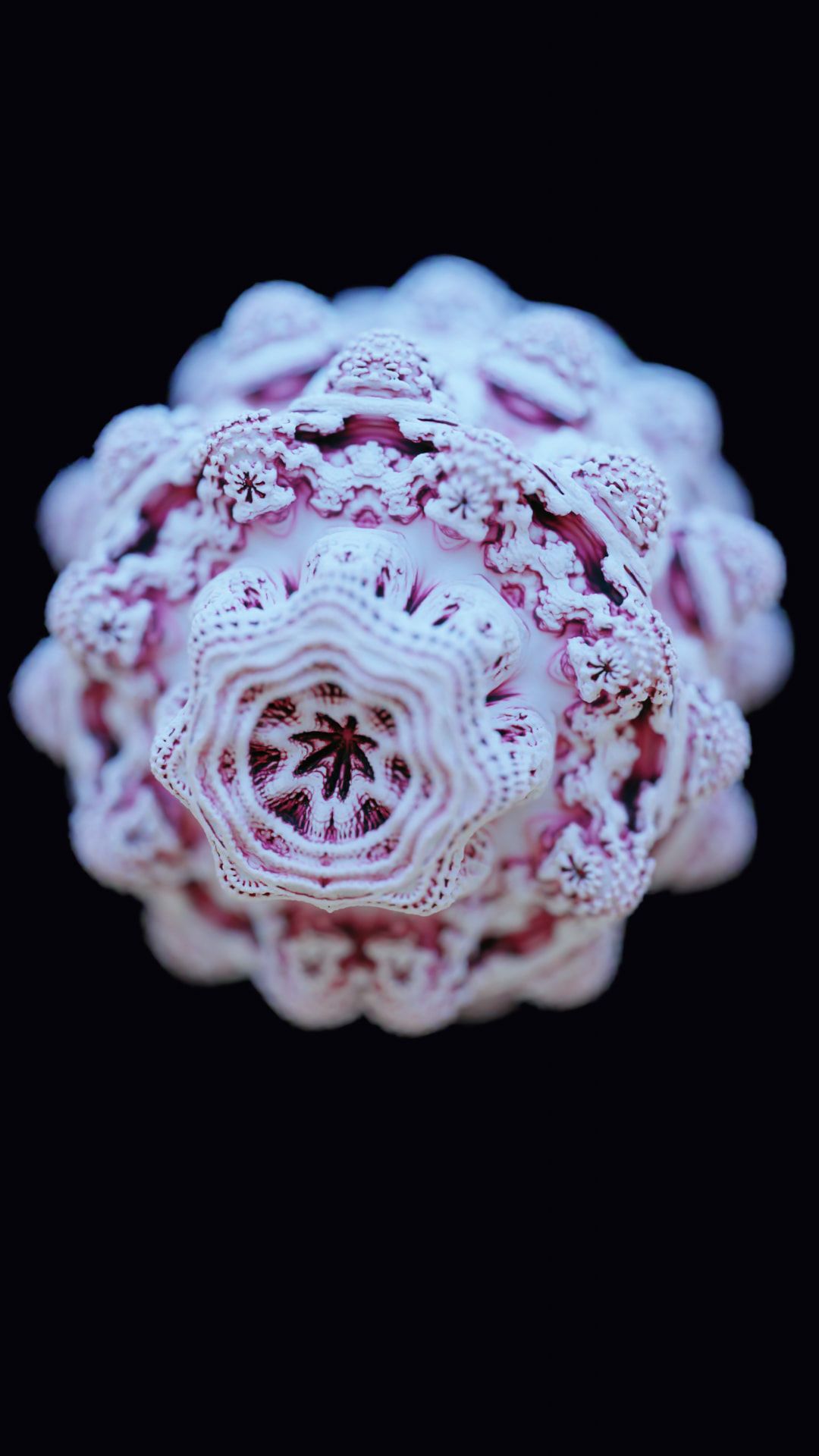Visualizing the Mandelbrot Set as a 3D polygon mesh.
- blender
- generative art
- rendering
The Mandelbrot Set is a set of complex numbers where does not diverge towards infinity, instead staying bounded. The set is the 2D plane of valid permutations.
The Mandelbulb is a 3D spherical representation of the 2D Mandelbrot set, and is iterated with the formula:
Where:
- is the current
(x, y, z)position tuple - is a triplex value, initialized to the current position tuple
- is a constant exponent value, e.g.
There’s a few variations of the formula out on the web, but the implementation that yielded good results for me here was:
The new (x, y, z) coordinates for are provided by:
Recursively iterating over the coordinates will create a point cloud which can then be visualized in software such as Processing, Blender or Houdini. Blender 3.3’s Geometry Nodes now has a Volume to Mesh node, which allows you to convert the result into a point mesh geometry.






Geometry Nodes layout
